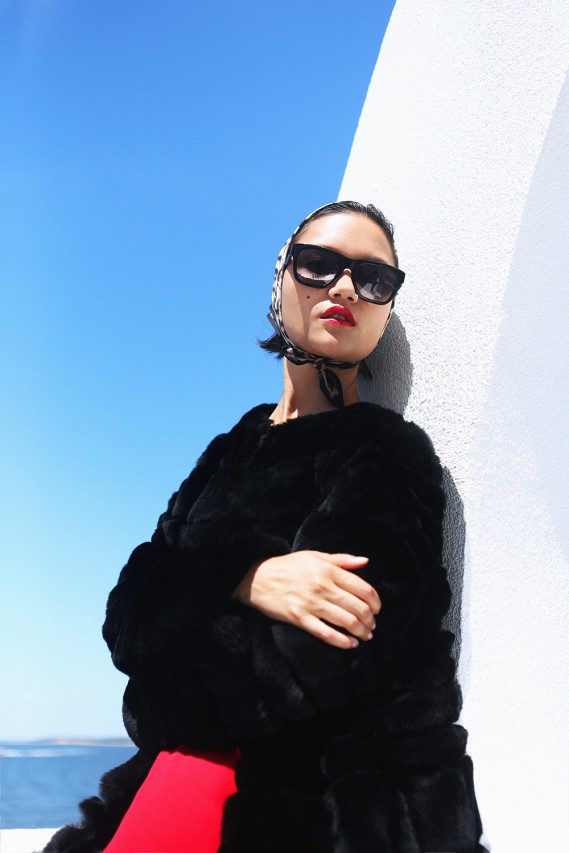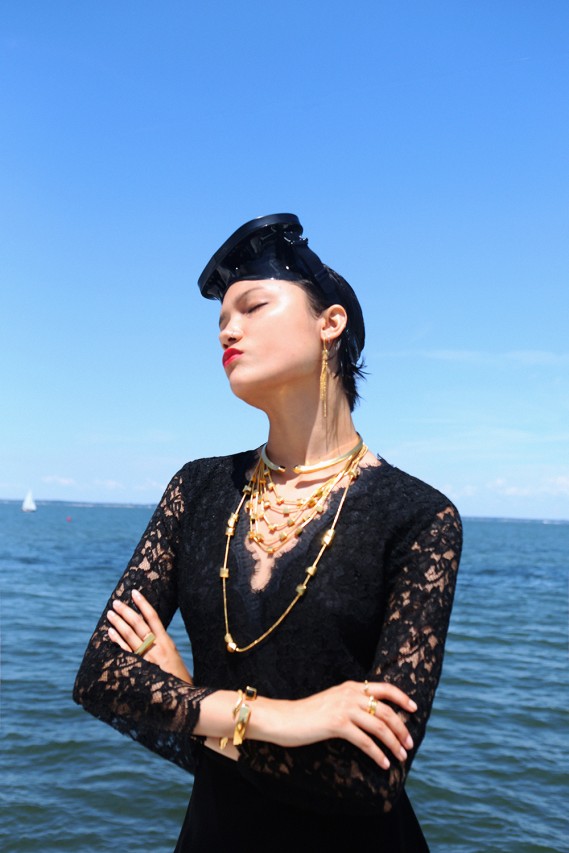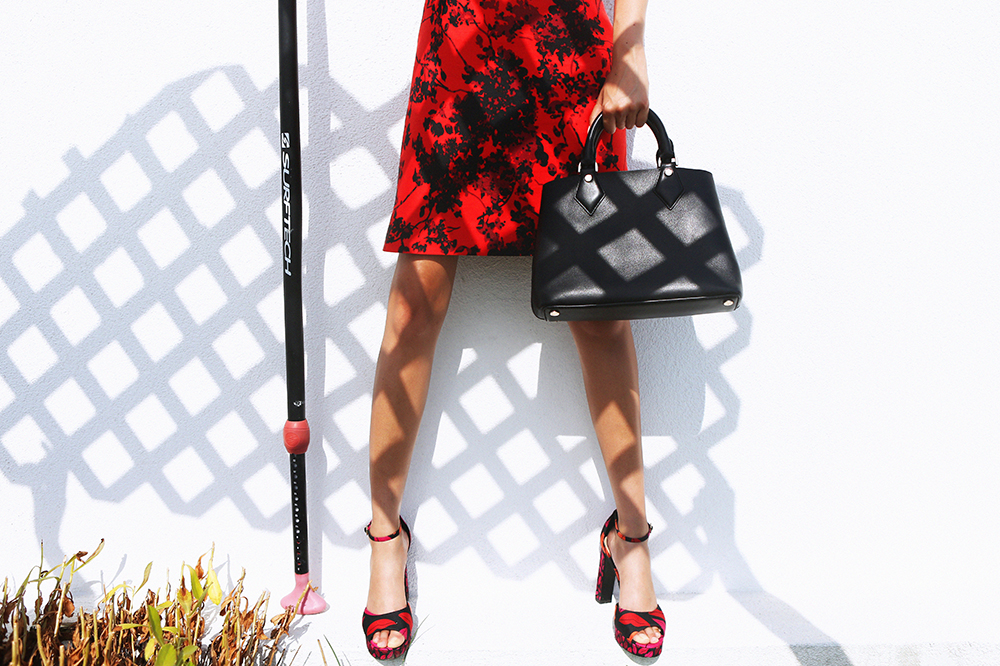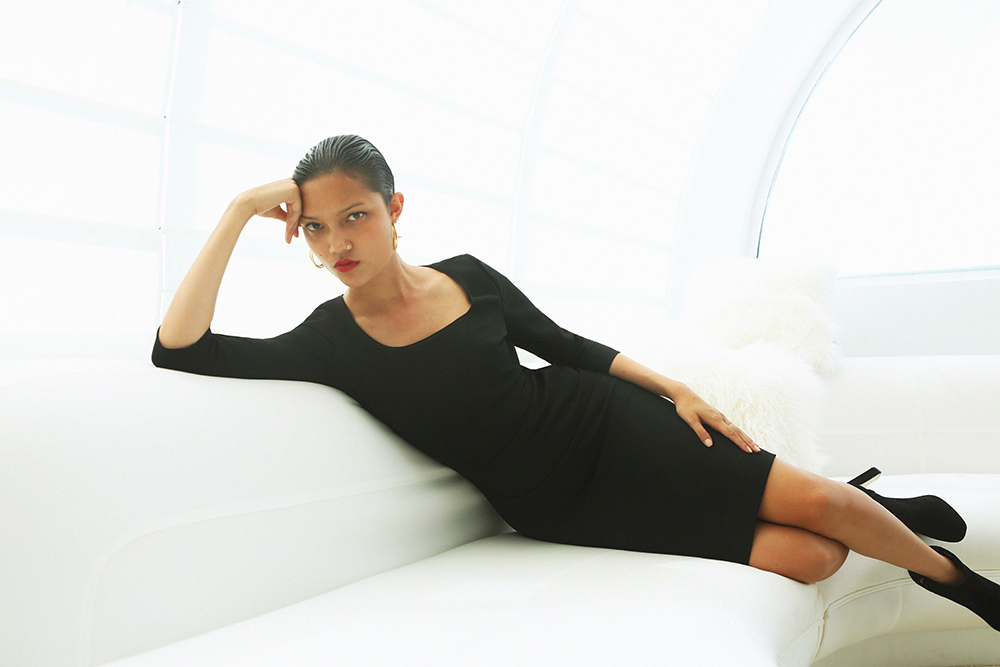There’s an interesting conversation going on in the fashion industry. On the eve of New York Fashion Week, when everyone is gearing up to spend hundreds of thousands of dollars on samples, models, backstage teams and venues, designers and institutions like the CFDA are questioning the very purpose and commercial value of runway shows. What are they good for? Who’s benefiting from them? Is the format still working? And how has social media and digital technology changed the fashion landscape?
Let’s begin by examining the timing of the fashion weeks. In just a few days designers will start showing their Fall-Winter collections for 2016-17. The first snow flakes have barely fallen in New York and we’re already looking at what’s ahead for next year. How is this relevant? Every photo taken from the front row, be it by bloggers, influencers or industry players, every bit of communication that’s produced, posted and published will have no immediate profit, for anyone. The clothes we will be seeing won’t be available for purchase for at least another six months. And that gap is irreconcilable in economic terms. Why spend all this money on a runway show if the buzz and hype created around it doesn’t generate sales? Isn’t that a missed opportunity?
The only people who should be seeing the clothes for next winter are the buyers and magazine editors. Buyers, because they need to place their orders ahead of time, so that production can fulfill them. Editors and stylists, because they need to prepare their fashion stories. Customers however – 191.1 million of them are internet shoppers in the US alone – and all those digital people who work in real time and make a living on-line, should only get actively involved once the clothes are on the floor, ready and available to be promoted. Personally I am always so inundated with images of the same looks and trends that I am tired of them by the time I can actually make that long-awaited purchase. I think we should chill the rehashing.
Some houses have caught on with this new development. Remember Miu Miu’s SS14 show? When every look had a coat? After some initial confusion it dawned on me that the collection would drop in February, when a lot of people are still shopping for winter coats. When you’re as smart as Miuccia and control your own sales points, it’s so obvious. Valentino has created an instashop link that directs you to a purchase page. Every image posted on the @maisonvalentino Instagram account corresponds to product in the window displays and e-commerce platforms. It’s all meticulously scheduled. Rebecca Minkoff’s team is taking it even further. If it works, her experimental #SEEBUYWEAR strategy might change the Fashion Week formula forever. Rebecca will be showing her SS16 collection again in February (restyled by a different team) because that’s exactly when it will be in stores. Every look that goes down the runway will be shoppable. You like that shoe you just saw on Vogue Runway? Go get it at Saks! Doesn’t this make so much more sense?
And there are more detrimental consequences to the current state of Fashion Week. The earlier the shows, the easier it is for the mass market high street brands to make copies. And the earlier the collections land in stores, the more likely they will have to go on sale. You’re not buying your floral dress in March. You’re buying it in June, when it’s getting warm, and the dress is, by then, on sale. Which in turns makes for even less profit… And don’t think for a second those pre-fall and resort collections are making a difference. And I haven’t even brought up the fact that every Harry, Dick and Tom designer wants to show during New York Fashion Week and creates a calendar that’s impossible to meander, least not for the Casting Agent who has to fight tooth and nail for models. It’s absolute chaos during those preparations; I’ve cried.
So you see, there is something wrong with this blueprint. The seasonal showings have become completely inadequate, mostly because of social media. Why don’t we create shopping events, rather than trade shows, where fans and bloggers and customers can buy what they see? Give them champagne and music and discounts and make it a fun evening, rather than a 12-minute, cost-ineffective ordeal. And why don’t we have buyers and editors make showroom appointments instead? Don’t they do that anyways? What’s the point of sitting through a show when you have to do re-sees and sales meetings later anyways? It’s all starting to sound pretty redundant.
And what does all this have to do with my photos here? It’s about the message and the timing. I shot this series in July 2015 as part of the new DVF FW15 campaign. I was asked to interpret the “Secret Agent” theme and make it my own. I immediately thought of the powerful and sexy Bond Girls and imagined a stark but luxurious 80s environment. I cast British/Indonesian beauty Charlotte Carey, who is in her own words “mysterious and independent but also super funny and wild” and names Barbara Carrera as her favorite villainess, and trekked to a mansion in Southampton. The sun was bright and hot, but so were the clothes… Half way through the shoot I started wondering if it was OK to show Fall clothes by a pool. And if my message was on point with the one DVF would be using throughout the season. Their main campaign with Karlie Kloss was moody and dark and had that paparazzi allure. It had little to no similarities with my sunlit retro vibe…
But then I backtracked. I was in shorts and sandals in July. And these wool dresses would be launching in September, when it was safe to say most of us would still be in shorts and sandals. Heck, some of us would even be by the pool still. So what’s wrong with giving a little real-time context? Isn’t it always summer somewhere in the world? Anyways, I compromised as much as possible, but my doubts were confirmed when DVF decided not to publish my photos. They thought their message would get lost. But it kind of makes sense now to dust them off. Because now is the time you are shopping for that fur coat on the diving board. And now is the time you want to wear those booties. And guess what? They’re on sale!
Model: Charlotte Carey at Muse Management
Photography/Styling/Casting/Edit: Natalie Joos
Assistants: Kai-Lee Parker and Moa Sandquist
Hair + Make-Up: Staci Child at Defacto
Production: Disco Meisch at Liebling









































































Dearest Natalie,
I came from the world you described, when only buyers and editors would be invited to the shows. There would also be a handful of society matrons that BOUGHT their clothes. It is a total joke how fashion is being run nowadays. Bravo for your intelligent review. Hugs
JJ
Great article! Agree that only Buyers, Stylists, Editors need to see the collections beforehand. I’ve been redesigning vintage and producing fashion shows for years and it makes great sense to show vintage collections on the runway as all pieces can be bought straight off the runway. I’d love to have you visit my warehouse in Houston where I have a 30 year vintage collection! Love your work!!!
Great words! Speaking from advertising/marketing background, it’s important to lay brand/product foundation and also evaluate market for investment in producing clothes. When managing PR and hype, wait time can often create more committed customers, therefore better sales with happier clients, less returns, etc.
My understanding is large full collection is essentially paraded on runway to gauge buyer and audience interest. I think it makes sense to allow people to buy immediately, but when dealing with an industry where perception of exclusivity adds to cool/want factor, I can see tendency to hold back on producing/buying immediately on luxury side, but what you propose makes a lot of sense for fast fashion (which I personally dislike!).
Luxury fashion operates on getting people in store for the experience, and that can lead to more sales too (certainly more enjoyment for customer too!). Fast fashion can certainly work in the way you describe, but my prediction if luxury fashion went that way to reduce time would result in a cheapening of overall quality of clothing and experience, and perhaps even the most important aspect of fashion: image.
Personally I’m frustrated with boring same-same looks combined with crazy out-there ones I will never try, more than I am about immediacy to purchase/try a look. That’s just my opinion! Best fashion can do is innovate, rather than imitate.
I wrote a big article detailing online retail and technology which could enhance and create new opportunities to innovate in the space of fashion show and sale: https://medium.com/digital-mundi-homines-cogitare/online-retail-should-embrace-principles-of-oembed-and-opengraph-for-great-justice-f99582242198
The article speaks generally of retail, but I think core components of it could be utilised for fashion presales, or measuring marketplace viability.
You’re right though: something needs to disrupt or innovate the existing “fashion show” publicity model in respect to season and customer sales. I think fashion as spectacle works well to attract hype, social media and buyers, but sometimes it turns to more theatre and people forget after they’ve been entertained. Either way, to ask people to remember your designs to buy 3-6 months later is hard, but necessary for lots of luxury brands due to production constraints.
It certainly is a complex and fascinating area to ponder about, of which I’m constantly thinking about! Thanks for sharing.
http://www.livinginclips.com
I would love for the mystery and allure of fashion to come back- where I haven’t already seen the collections and the first time they are revealed is through editorial online and in the glossies. On one hand- I love the internet for creting the democratization of fashion where everyone can do their own thing- but the downside is the way fast fashion does Pre-interpretations that are seasonally specific and can quickly be released before the collections are even on the market kind of makes everything boring AF!
I think we’re in desperate need of an overhaul of the system. I hope this will finally happen!
Best from Paris,
Pauline
http://thevoyageur.net
Did you hear how Burberry is addressing this very issue? I agree with you. As a fashion writer, I struggle with the fashion calendar and what to write about on my blog. Do I discuss fall fashion when the collections are shown? Or 6 months later when people might be buying it? I decided to do the later, because when March rolls around, I’m excited about spring arriving, the last thing I want to do is talk about fall!
What a timely article, as Burberry announced a “seasonless” fashion show rollout for next year, where clothing can immediately be purchased. As someone who used to work in fashion for quite some time, I’m excited watch the industry adapt to new expectations, wants, and needs – my only hope is that it is a positive change.
Wow I have never thought of this but you so right. It would be nice to be able to buy the exact thing around the time of fashion week. Thefullcolorlife.co
It is indeed a really interesting article, your point of view is truth and sad at the same time that somehow the magic is more or less gone!
well done
http://lemontrend.com
I saw that Tom Ford, was only going to be doing a show in September and allowing the clothes to be purchased right after the show. Fashion week’s transformation is already underway!
Greta | http://www.gretahollar.com
All I can say is… DAMN what a great article, conclusion, and written piece about one of the many issues in this industry. I am so glad that I found your blog, and it was great meeting you a few days ago.
Best,
XX
A
alexnoiret.com
You are so spot-on. Besides the permeating industry-wide issues, this speaks of more fundamental flaws with the way we live now: instantaneousness vs. waiting, fast hits vs. slow burning loves, appearances vs. real world. At the end of the day, fashion will never burn its bridges with the fantastical, or the big showy shows, because that’s what sets it apart and marks it out as luxury. It’s kinda tacit that it doesn’t need to deal with the everyday. It just needs to make the distinction clearer, I feel. http://www.amotherstory.co.uk